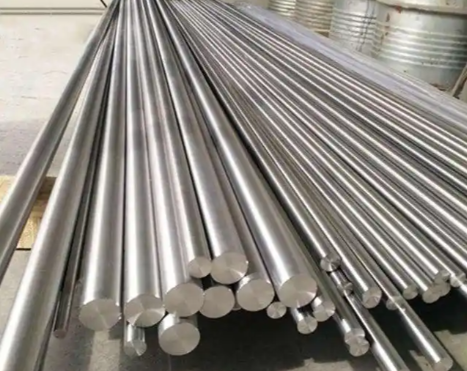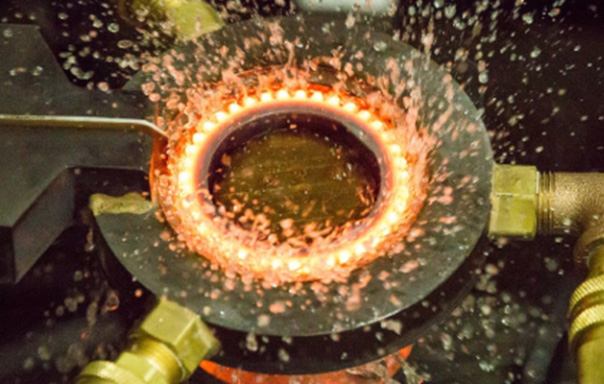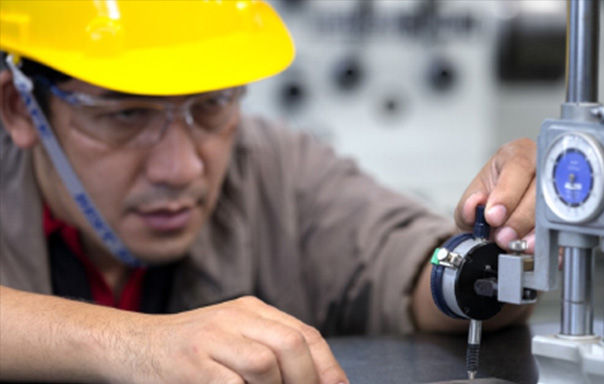Daily press, 2025-09-10, 01:58 pm
Analysis of Characteristics, Advantages and Limitations of 2205 Duplex Stainless Steel
As one of the most widely used duplex stainless steel grades in the industrial field, 2205 duplex stainless steel, with its unique metallographic structure of coexisting ferrite and austenite phases, strikes an excellent balance between strength, corrosion resistance and cost control. It is extensively applied in scenarios with strict material performance requirements, such as petrochemical engineering, marine engineering, pressure vessels, municipal water supply, and desulfurization & denitrification. To help practitioners and designers gain a more comprehensive understanding of this material, the following sections will elaborate on its core characteristics, prominent advantages, and application limitations in detail.
The most prominent basic characteristics of 2205 duplex stainless steel are high strength and broad temperature adaptability:
-
Its yield strength is far higher than that of ordinary austenitic stainless steels (e.g., 304, 316), reaching 1.5-2 times that of the latter. This feature enables designers to effectively reduce the weight of components in product design (e.g., the wall thickness of storage tanks and pipelines can be significantly reduced). Meanwhile, compared with austenitic stainless steels like 316 and 317L, it has more advantages in material cost control.
-
The conventional applicable temperature range of this alloy is -50°F ~ +600°F (approximately -45.6°C ~ 315.6°C). If it needs to be used in scenarios beyond this range (e.g., high-temperature or extremely low-temperature environments), it can be considered as an alternative, but certain restrictions must be noted—especially for welded structural parts, where the impact of temperature on welding performance needs to be additionally evaluated.
Compared with traditional stainless steels (especially austenitic stainless steels), the advantages of 2205 duplex stainless steel are concentrated in two dimensions: "performance improvement" and "cost optimization", which can be specifically divided into the following 6 points:
-
Advantages of high strength and lightweight: Its yield strength is more than twice that of ordinary austenitic stainless steel, and it also has sufficient plastic toughness required for forming. Taking storage tanks and pressure vessels as examples, when 2205 is used for manufacturing, the wall thickness can be reduced by 30%-50% compared with commonly used austenitic stainless steel, which not only reduces material consumption but also lightens the overall weight of the equipment, indirectly lowering installation and transportation costs.
-
Excellent resistance to stress corrosion cracking: Even among duplex stainless steels with the lowest alloy content, their resistance to stress corrosion cracking is superior to that of austenitic stainless steels. Especially in chloride-containing environments (e.g., marine water, chlorine-containing chemical media), it can effectively avoid the core problem of stress corrosion that ordinary austenitic stainless steels are prone to.
-
Outstanding broad-spectrum corrosion resistance: In most corrosive media, the corrosion resistance of 2205 is better than that of conventional 316L austenitic stainless steel. If upgraded to super duplex stainless steel (e.g., 2507), the corrosion resistance can be further improved. In some strong corrosive media such as acetic acid and formic acid, it can even replace high-alloy austenitic stainless steel or special corrosion-resistant alloys.
-
Excellent resistance to localized corrosion: Compared with austenitic stainless steels with similar alloy content, 2205 exhibits more stable performance and longer service life in localized corrosion scenarios such as wear corrosion (e.g., slurry transportation pipelines) and fatigue corrosion (e.g., dynamic load components).
-
Good adaptability of linear expansion coefficient: Its linear expansion coefficient is lower than that of austenitic stainless steel and is close to that of carbon steel. This feature makes it very suitable for connection with carbon steel (e.g., manufacturing of clad steel plates, lining of carbon steel equipment), which can reduce thermal stress caused by temperature changes, lower the risk of cracking at the connection, and has important engineering practical value.
-
Strong resistance to impact and sudden loads: Whether under dynamic or static load conditions, the energy absorption capacity of 2205 is higher than that of austenitic stainless steel. For structural parts that need to cope with sudden accidents such as impact and explosion (e.g., chemical reaction kettles, marine platform supports), this advantage can significantly improve equipment safety and has practical application significance.
Although 2205 has excellent performance, it still has certain limitations compared with different types of traditional stainless steels, which need to be focused on during material selection:
-
Lower application universality: Austenitic stainless steels can cover a wider temperature range (e.g., high-temperature environments), while the long-term service temperature of 2205 must be controlled below 250°C, which limits its application in high-temperature working conditions (e.g., boilers, high-temperature pipelines).
-
Poorer processing and forming performance: Its plastic toughness is lower than that of austenitic stainless steel, and the process difficulty of cold working (e.g., bending, stamping) and hot working (e.g., forging) is higher, requiring stricter requirements on equipment and operation technology.
-
Risk of medium-temperature brittleness: Brittleness phases are prone to appear in a specific medium-temperature range (approximately 300°C ~ 500°C). It is necessary to strictly control the heat treatment process (e.g., solution treatment temperature, holding time) and welding system (e.g., welding heat input); otherwise, material performance may deteriorate (e.g., decreased strength, reduced corrosion resistance).
It should first be clarified that 2205 is superior to ferritic stainless steels in comprehensive performance (e.g., mechanical properties, corrosion resistance, processability) (for example: better plastic toughness, stronger resistance to localized corrosion, better cold forming and welding performance, and no preheating before welding or post-weld heat treatment is required). However, its core limitation lies in cost:
The content of alloying elements (e.g., nickel, chromium) in 2205 is higher, resulting in a significantly higher material purchase cost than ferritic stainless steels. Ordinary ferritic stainless steels (e.g., 410) usually do not contain nickel and have obvious cost advantages. If the application scenario has low performance requirements (e.g., ordinary decoration, non-corrosive environments), the cost disadvantage of 2205 will be amplified.
2205 duplex stainless steel is a "performance-oriented" material, and its core value lies in balancing "high strength", "high corrosion resistance" and "relatively controllable cost". It is particularly suitable for scenarios that have dual requirements for material mechanical properties and corrosion resistance, and where the service temperature is within the range of -45.6°C ~ 315.6°C (e.g., marine engineering, chemical storage tanks, municipal sewage pipelines).
In actual material selection, a comprehensive judgment should be made based on specific working conditions (temperature, corrosive medium, load type), processing requirements and cost budget: if high-temperature application or simplified processing procedures are required, austenitic stainless steels can be preferred; if the budget is limited and the working conditions have no strict requirements, ferritic stainless steels are more cost-effective; while when "high strength + corrosion resistance" becomes the core demand, 2205 duplex stainless steel will be a better choice.
Related Reading





